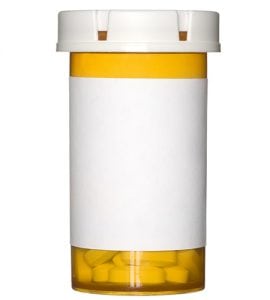
Learn more about how opiates can quickly become dangerous.
Opiate addiction is an increasingly worrisome challenge in this culture. As powerful narcotic painkillers have emerged and have become the prescriptions of choice to treat severe pain, more people are realizing with dismay that they have become addicted to their medications.
- Opiate addiction can happen to anyone
- Typically, standard withdrawal is a long and painful process
CONTACT US TODAY
The Course of Opiate Addiction
An addiction to an opiate can advance subtly. The pain of an injury or the aftereffects of surgery may make a strong painkiller necessary. If the pain is of long enough duration, the sufferer may find that more of the drug is needed to provide the same relief. This is known as drug tolerance. If use of the drug continues, tolerance will become dependence.
When a doctor suggests to a patient that he or she should be ready to discontinue the pain medication, the patient may begin to experience withdrawal. Withdrawal symptoms are extremely unpleasant. The person will experience muscle spasms and aches. They usually have gastrointestinal upsets like vomiting, nausea and diarrhea. They often have psychological reactions such as intense anxiety, irritability and confusion. An inability to sleep is also typical.
There are two paths available at this point: to get medical help to fight the drug dependence or to seek illegal sources for the drug or a substitute. The second path often leads quickly to heroin. Unfortunately, many people fear or even have disdain for the process of detoxification. They do not want others to know that they have become addicted to opiates, they do not want to suffer withdrawal, and they do not want to engage in the talk therapy that is required in most rehab facilities. They try, and fail, to go it alone.
One of the newest methods of opiate detox may be a good solution for people who want a quick, private way to rid themselves of their physical dependence on opiates. This method works equally well whether the person is using prescription medications or has become addicted to street drugs like heroin. The method is called rapid opiate detox.
Rapid Opiate Detox
The purpose of rapid opiate detox is to provide complete relief from physical dependence on opiates with little or no discomfort. The entire treatment program can be completed in a matter of a few days, and the detox centers make patient confidentiality a priority.
Rapid opiate detox is not covered by health insurance plans, and it is more costly than most traditional rehab programs. Nevertheless, the fact that it can be performed quietly, quickly and with a minimum of discomfort makes it an attractive option for people who want to break their addiction with as little disruption to their lives as possible.
The method of rapid detox typically requires a couple of days in a surgical center followed by a brief stay at a residential aftercare facility. The course of treatment breaks down in this way:
– The patient presents at the surgical center and is given a full range of medical tests. These will include tests of heart function, a chest X-ray, liver and kidney function and a blood screen. If the patient has diabetes, smokes or is overweight, these will also be noted.
The purpose of this extensive testing is to determine any health conditions that may need to be accounted for during the detox procedure. The protocol is individualized to best suit each patient.
– Once the patient’s health has been evaluated, the patient is moved into the operating room of the surgical center where the actual detox is conducted. A board-certified anesthesiologist first administers sedation. The sedative ensures that the patient will not be consciously aware of any of the symptoms of withdrawal.
The patient is then given the drug naloxone through an IV. Naloxone is an opiate antagonist which allows the body to rid itself of opiates much more quickly than through normal bodily processes.
This sedation phase lasts from 30 to 90 minutes. When the patient emerges from sedation, the body will be clear of opiates and there will be no physical craving for the drug. The patient remains under close observation for several hours in case there are any adverse effects of the treatment.
– Full recovery from the sedation is followed by a return to the patient’s room, where he or she will typically be given electrolytes and fluids to combat the dehydration that often results from detox. Once the medical staff determines that the patient has physically stabilized, he or she is released into the recovery phase of treatment.

Safety Protocols
Rapid opiate detox is designed to be quite safe for the patient. The procedure takes place in a full-service hospital and is overseen by medical professionals. Each patient is fully evaluated before the detox procedure and is closely monitored during and after.
The procedure avoids the outdated method of placing the person under hours of general anesthesia. This accomplishes the purpose of relieving the discomfort of withdrawal without the sometimes serious risks of general anesthesia.
The patient is given time to fully recover before being released. This recovery takes place under the close eye of the medical staff so any adverse reactions can be treated immediately.
Pros and Cons
Rapid opiate detox may be the method of choice for some people but may be less suitable for others. For example, traditional rehab programs offer much more in the way of individual and group therapy which may be a better choice for people who need a broader support structure to return to a successful life path.
For people whose lives are otherwise stable, in other words, breaking their opiate addiction is their primary or only need, rapid opiate detox offers a safe, effective path back to health.



